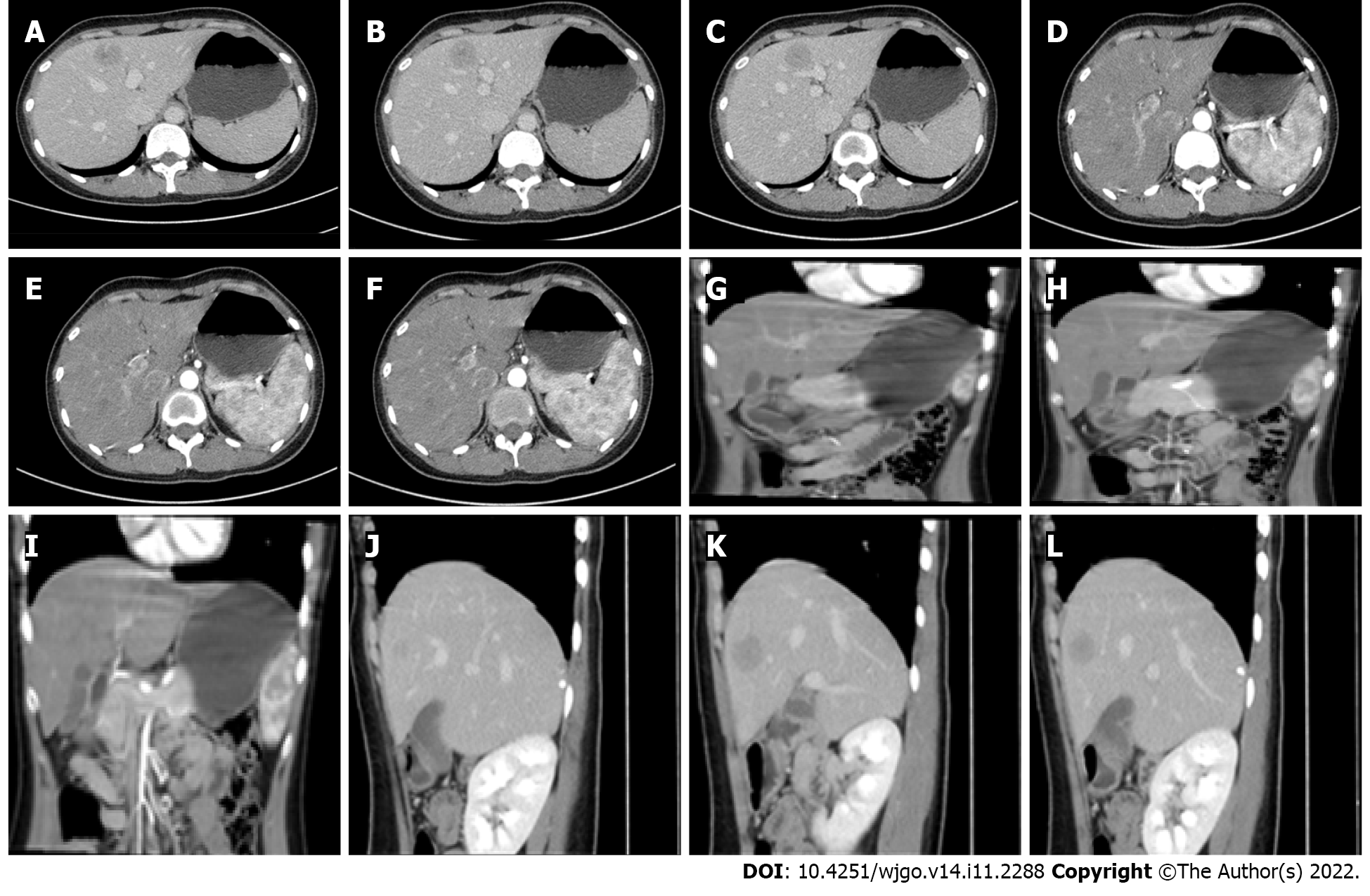Copyright
©The Author(s) 2022.
World J Gastrointest Oncol. Nov 15, 2022; 14(11): 2288-2294
Published online Nov 15, 2022. doi: 10.4251/wjgo.v14.i11.2288
Published online Nov 15, 2022. doi: 10.4251/wjgo.v14.i11.2288
Figure 1 Ultrasonography before surgery.
A: A hypoechoic nodule, about 26 mm × 22 mm in size; B: The nodule with a regular shape, clear boundary, and homogeneous internal echo; C: It can be seen in S4 of the liver.
Figure 2 Abdominal contrast-enhanced computed tomography before surgery.
Nodular abnormal enhancement foci (about 27 mm × 26 mm) can be seen in the left inner lobe of the liver, showing uneven and obvious enhancement in the arterial phase and weakening in the venous phase, and a pseudo-capsule can be seen surrounding it. A-F: Axial position; G-I: Coronal position; J-L: Sagittal position.
Figure 3 Immunohistochemical staining and in situ hybridization test.
A: Tissue specimens; B and C: Immunohistochemical results: Proliferative histiocytes CD21 (+), CD35 (+), D2-40 (-), and SMA (+), focal. Lymphocyte hepatocyte (+), CD3 (diffuse), CD20 (-), CD79 α (-), CD10 (-), bcl-2 (-), CD5 (+), CD19 (+), Sox11 (-), CD56 (-), CD4 (+), partial, CD8 (+), minority, cyclin D1 (-), TIA (+), Granzyme B (-), CD2 (+), CD7 (+), bcl-6 (-), MUMI (-), CD30 (scattered transformed large cells), and TCR-R (-). Ki-67 (about 25%+); D: In situ hybridization results: Some cells showed EBER+, positive control +. EBER: Epstein-Barr encoding region.
Figure 4 Abdominal computed tomography after 6 mo of follow-up.
A: After 6 mo of follow-up, the abdominal computed tomography re-examination; B: The re-examination showed that no nodular or strip-shaped high-density shadow in the liver; C: There was no abnormality in the left lobe of the liver.
- Citation: Fu LY, Jiang JL, Liu M, Li JJ, Liu KP, Zhu HT. Surgical treatment of liver inflammatory pseudotumor-like follicular dendritic cell sarcoma: A case report. World J Gastrointest Oncol 2022; 14(11): 2288-2294
- URL: https://www.wjgnet.com/1948-5204/full/v14/i11/2288.htm
- DOI: https://dx.doi.org/10.4251/wjgo.v14.i11.2288












